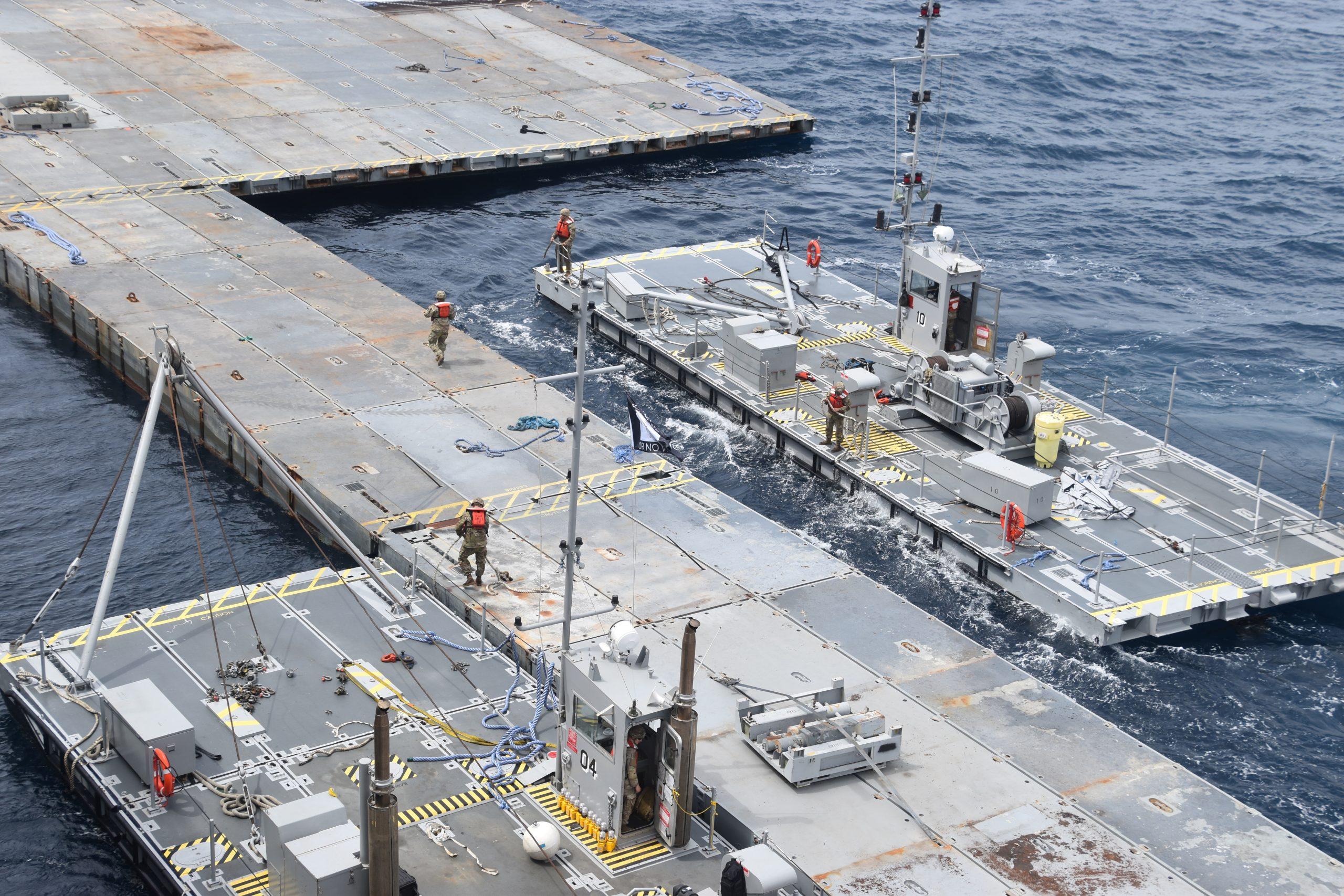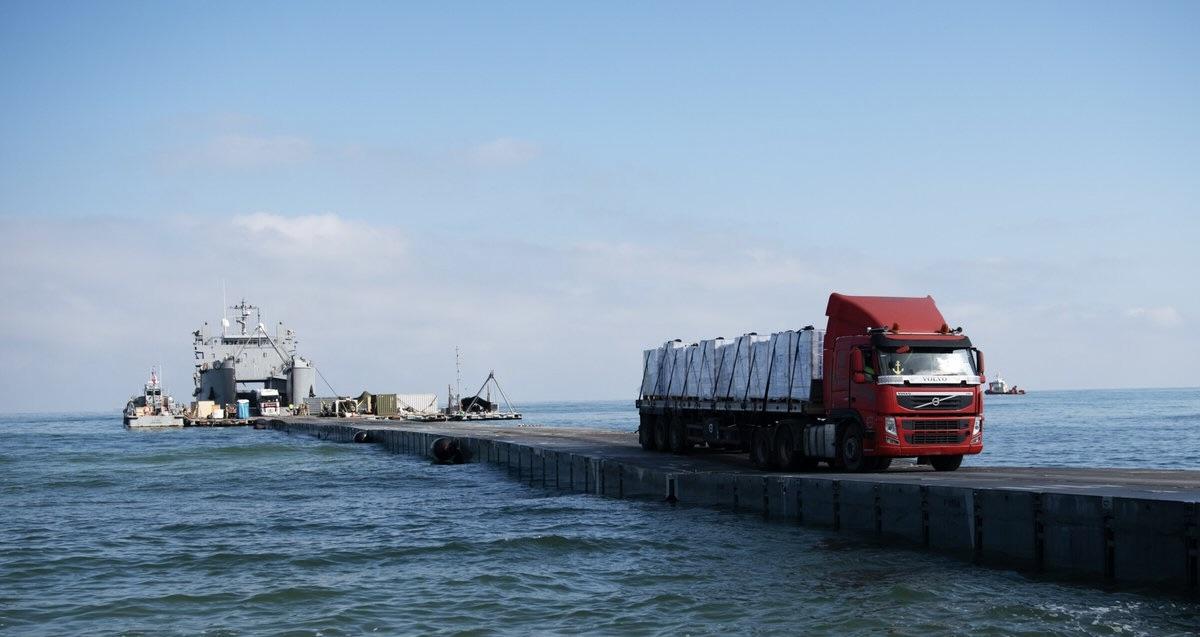
No doubt the Chinese military was paying attention.
Last month the United States disassembled and removed the floating pier it had assembled at a Gaza beach to take aid deliveries.
Heavy seas beat it. Such a pier supposedly can be assembled in hours, but this one took almost a month. When it was operational, waves damaged it, and it repeatedly had to be pulled away from the beach to prevent its destruction. Once it had to be towed to a port for repairs. Waves drove ashore boats that serviced it.
And all that was nothing compared with the challenges that China’s armed forces would face in trying to deliver a mountain of personnel, equipment and supplies in an invasion of Taiwan. The pier’s lesson for China is that invading the island would be a doomed endeavour.
The weather of the Taiwan Strait makes the eastern Mediterranean look like a bathtub. Defenders would attack China’s piers. Almost every beach where China might want to build floating piers is overlooked by terrain that would turn the unloading zones into kill zones.
Even before those problems arise, building and installing a floating pier is a huge exercise. The US Department of Defense budgeted $230 million for the one at Gaza, called the Trident Pier. It was operational for 20 days—less than half of the time after it was positioned—and handled only about 9000 tonnes of supplies.
Logistics is almost always harder than planned, but joint logistics over the shore (JLOTS)— moving people and things from ships to land without a port—is subject to innumerable kinds of friction.
Any Chinese invasion of Taiwan would require improvised piers in many locations simultaneously. They’d be part of a logistical effort that would be enormously larger than anything the Chinese navy has attempted. Even optimistic estimates of just 300,000 personnel for an invasion force would be double the international forces fighting in Afghanistan at the height of the global war on terror.
Higher estimates suggest an invasion of Taiwan could need as many as 2 million soldiers. Few of them, and very little of their equipment and supplies, could go by air. Almost everything would have to cross the strait in ships.
Taiwan’s seven major ports would almost certainly be contested, guarded by sea drones and subject to sabotage.
The island has 14 beaches usable for military landings. All but one are surrounded by cliffs and urban jungles, perfect places for the Taiwanese army to hide forces that would attack anything coming ashore and anything used in bringing it ashore, including the piers themselves.

Mother Nature would be doing her bit, too. Indeed, her efforts may be enough to prevent using the beaches in the first place.
Also called the Black Ditch, the strait is known for ‘… strong winds, wave swells, and fog…’ half the year. The storms, heavy rain and squally winds of monsoon seasons sweep it and the coasts on either side. An average of six typhoons hit the strait each year. As Ian Easton details in his book The Chinese Invasion Threat, the weather of the strait shrinks the windows available for an invasion to just two months of ‘good suitability’: April and October. That is a narrow time constraint that worsens a vast logistics challenge.
Apart from soldiers and their equipment, the Chinese navy would need to ferry food, fuel and ammunition to them. The landing alone could require 30 million tonnes going ashore, which far outstrips the capacity of the Chinese navy’s amphibious transport fleet.
Recognising this, the navy is incorporating civilian roll-on, roll-off ferries (roros) as reinforcements. While China has fewer than 50 roros today, it could have two or three times as many by 2032.
That still leaves the problem of getting over the beach. China should view the story of the Trident Pier as a cautionary tale. JLOTS operations are technically complex, costly and risky. The security threat to the improvised pier at Gaza was hardly comparable to the one that Taiwan and its friends would present to a Chinese cross-strait amphibious operation. Nor were the weather challenges comparable, though the sea state off Gaza was still bad enough to ensure the US pier was usually not functional.
The money that the US spent on the pier also paid to show China just how hard JLOTS can be. If that lesson deters war, it was a cheap price to pay.